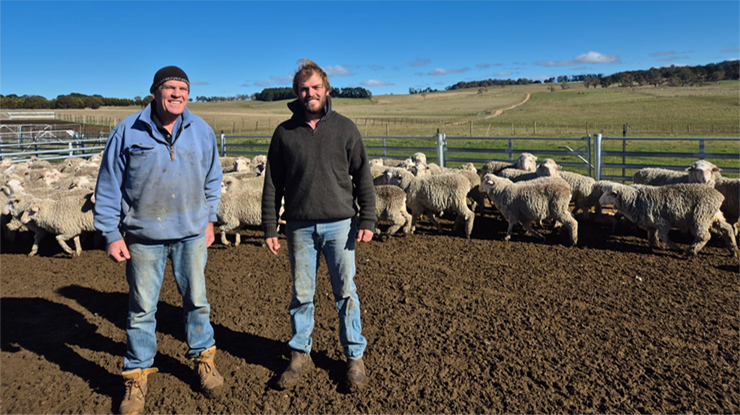 Charlie (left) and Max Hood of Tintagel Pastoral Company. Image Hood family.
Charlie (left) and Max Hood of Tintagel Pastoral Company. Image Hood family.
Strategic DNA investment for long-term productivity
Charlie and Max Hood’s management of the NSW-based Tintagel Pastoral Company’s ram breeding nucleus and the commercial ewe operation it feeds into has long been informed by the latest available genetic research tools.
Most recently, the Hoods, who are wool, beef and lamb producers, have been involved in an MLA-supported University of New England project to develop genomic prediction tools for commercial Merino sheep. This has added another layer to their approach.
Established genetics
With a strong understanding of Australian Sheep Breeding Values (ASBVs) and Estimated Breeding Values (EBVs) through their lamb and beef enterprises, the Hoods recognised the value similar tools could offer in advancing their Merino flock’s genetics.
Since 2005, Charlie and Max have used within-flock breeding values and measured phenotypes such as fleece traits. The project’s new Genomic Breeding Values (GBVs) provided them with the opportunity to test the value of these new tools and opened up the option of moving to submit data into Sheep Genetics to generate ASBVs.
GBVs are calculated using an animal’s DNA information. They can be combined with traditional performance data to enable producers to make more accurate selection decisions across age groups within a flock, and for traits with limited performance data.
Solid investment
Charlie and Max fundamentally believe using genetics increases production and are worth the investment – and that genomic prediction tools can help guide these investments more effectively.
“We primarily wanted to improve the efficiency of how we measured genetic gain within our flock,” Charlie said.
This knowledge has helped them shift from an open ram breeding nucleus to a closed breeding program. This strategic approach to genetic selection includes incorporating genomic-only breeding values when selecting rams and using the information to guide more informed and targeted decisions aligned with their breeding objectives.
Enabling change
This shift wasn’t without its challenges but has paid off through a more tightly controlled, genetics-driven breeding program.
“It was a bit of a leap of faith to be closing the open nucleus progeny base evaluation,” Max said
Their involvement in the project helped the Hoods learn the system and how to get the most out of the new insights it provided.
“We sought external support for the technical side of implementing genomic breeding values – we relied on consultancy company SheepMetriX to help us interpret and apply our data,” Max said.
Despite still being in an early stage of development, Charlie and Max say their initial progress using the tool is promising – with more time and experience key to increasing their confidence.
Meaningful data key
Charlie and Max found the data generated by the tool relatively straightforward to interpret, particularly with support from SheepMetriX. It helped identify which information was most relevant to their operation.
While the process of understanding the results has been manageable, they note that the true meaning and value of the data will become clearer over time.
Future goals
In the next 12–18 months, Charlie and Max aim to generate more meaningful data and build greater confidence in its accuracy. They also plan to evaluate the cost-effectiveness of using the tool and establish clear benchmarks and goals to guide their breeding decisions.
The Hoods are committed to enhancing both the genetic quality and productivity of their flock for sustained success.
Specific targets in their sights include:
- reducing fibre diameter
- maintaining or slightly improving fleece weight
- lowering wrinkle scores
- lifting weaning rates.
Potential to grow
The Hoods are tentatively confident that at this early stage the tool will deliver significantly faster genetic gain at an attractive price point, however they see considerable potential as the data pool expands and more results become available.



